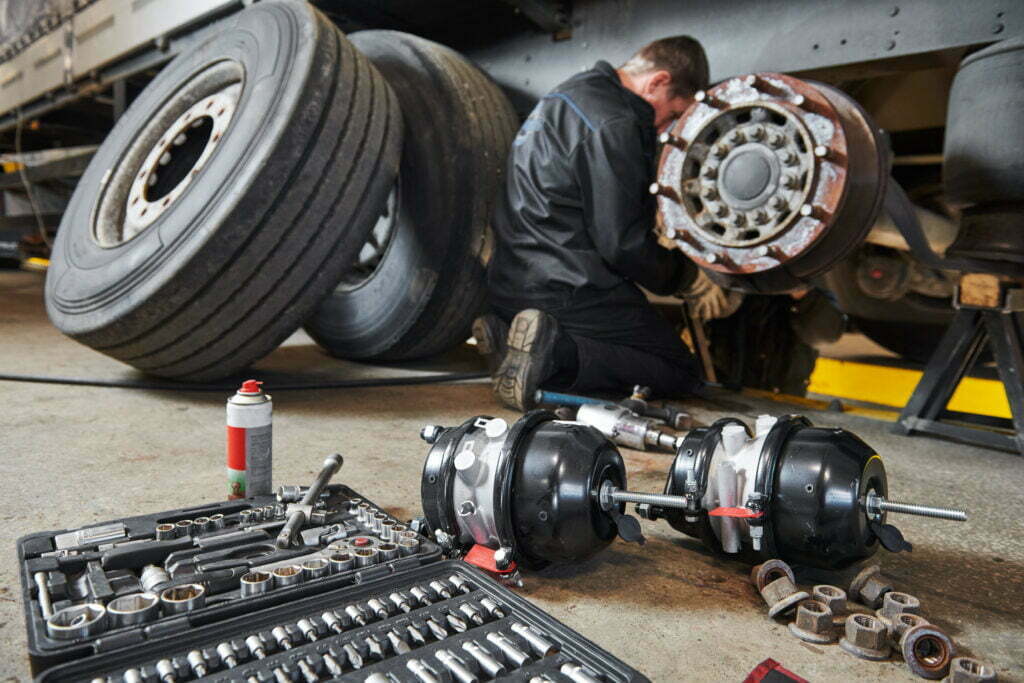As semi-trucks age, it becomes more and more important to keep up with routine maintenance. This is because the trucks have more wear and tear, and they are not as efficient as they used to be.
However, many fleet managers overlook the importance of maintenance for aging trucks. By doing this, they are missing out on an opportunity to get a more useful life out of their units, and the repercussions can cost money and create safety issues.
Don’t be one of those managers. In this blog post, we will be looking at the importance of continuing to maintain these vehicles and how to do so effectively. Let’s begin!
One Big Myth About Aging Vehicles
It is a common misconception that once a truck reaches a certain age, it is no longer worth repairing or maintaining. This could not be further from the truth.
In fact, by neglecting maintenance on an aging truck, fleet managers are only hastening its demise. Routine maintenance can help extend the life of a semi-truck, and it can also improve its performance.
Also, you have to consider the safety aspects at play. If the plan is to run it until the metaphorical wheels fall off, you run a greater risk of turning that metaphor into reality. In other words, getting lax on the maintenance of an aging vehicle means that breakdowns, blowouts, and malfunctions become harder to anticipate. It is entirely possible that a deadly accident could occur before you have a chance to decommission the vehicle or sell it for lighter use.
How to Maintain Your Aging Semi-Trucks for Maximum Value
When it comes to maintenance for aging trucks, there are a few key things to keep in mind. First, it is important to check the fluids regularly. This includes the engine oil, transmission fluid, coolant, and brake fluid.
These fluids should be checked at least once a month, and they should be changed according to the manufacturer’s recommendations. Aging trucks do have to work harder, and they burn through fluids more quickly. Yet, you may not be at that point where the cost of replacing the unit makes sense, so it is important to run a cost-benefit analysis on your truck’s current degree of profitability.
Another key area of focus for aging truck maintenance is the brakes. The brakes should be inspected regularly for wear and tear, and they should be replaced when necessary. Additionally, the braking system should be flushed and bled every two years to ensure that it is working properly. Failing to do so can lead to accidents, resulting in damaged cargo, property, loss of life, and heavy ongoing liabilities.
Finally, it is important to pay attention to the tires when maintaining an aging truck. The tires should be rotated every six months or 10,000 miles, whichever comes first.
Additionally, the tires should be inflated to the proper pressure levels at all times. Not doing so can lead to premature wear and tear, and it can cause a decrease in fuel economy. It also creates a situation where blowouts can occur, putting the lives of your driver and surrounding motorists in jeopardy with no time to prepare or react.
By following these simple tips, fleet managers can get more mileage out of their aging trucks and safely delay costly replacements until a new budget cycle can take effect.
Aging Semis Have More Use Left Than You Think
Aging trucks require more care and attention than newer models. However, many fleet managers overlook the importance of maintenance for these units. By doing this, they are missing out on an opportunity to extend the life of their trucks.
Routine maintenance can help keep an aging truck on the road longer, and it can also improve its performance. Believe us, we know and have the experience to safely run your units well beyond 150,000 miles.
Remember, each truck that you have is a business in itself. And our business is to make sure that you’re getting the maximum amount of value from yours by providing reliable and expert truck repair and maintenance from Mile Zero until the very end. Contact J&A Fleet Maintenance today, and we’ll put our expertise to work for you.

